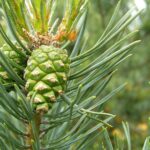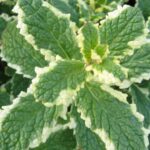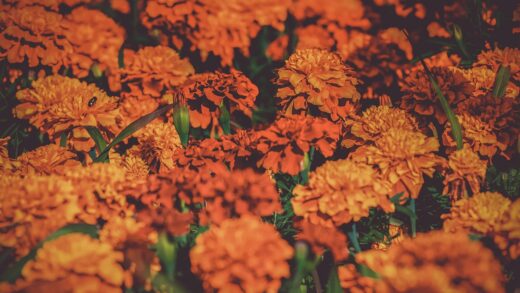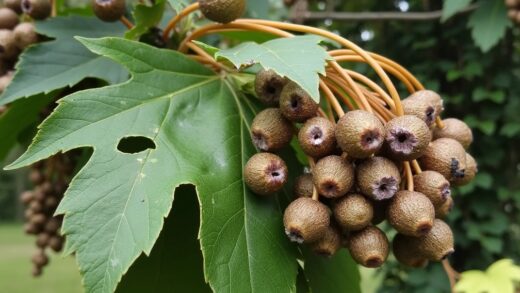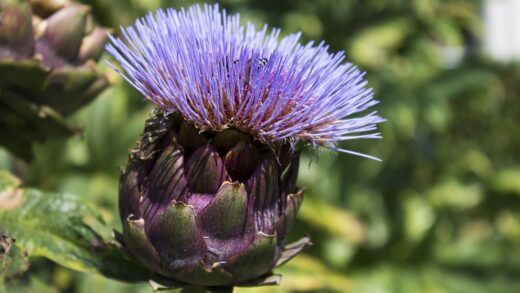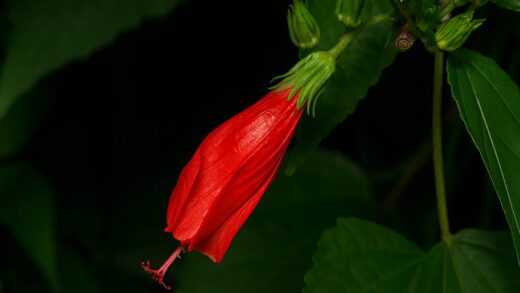Understanding and mastering the art of watering is fundamental to the successful cultivation of the sleeping hibiscus. This plant, with its origins in the humid subtropical and tropical regions of the Americas, has a distinct relationship with water that dictates its health, vigor, and ability to produce its unique, never-fully-opened blossoms. Proper irrigation is not about adhering to a rigid schedule, but rather about developing an intuitive understanding of the plant’s needs, observing its signals, and responding to the changing conditions of its environment. It is a dynamic process, a dialogue between the gardener and the plant, where the goal is to maintain a perfect equilibrium of moisture at the roots—enough to sustain life, but not so much as to suffocate it.
The core principle of watering the sleeping hibiscus is to provide consistent moisture without allowing the soil to become waterlogged. During its active growing season, which spans the warmer months of spring and summer, the plant’s demand for water is at its peak. This is when it is actively producing new leaves, extending its branches, and forming flower buds. In this phase, the soil should be kept evenly moist, akin to a well-wrung-out sponge. Allowing the soil to dry out completely during this period can cause stress, leading to wilted leaves, bud drop, and a general decline in the plant’s vitality.
Conversely, the plant’s water requirements diminish significantly as it enters the cooler, shorter days of autumn and winter. Its metabolic processes slow down, and it enters a state of semi-dormancy. This is the period when the risk of overwatering is highest. Continuing to water with the same frequency as in the summer is a common and often fatal mistake, as perpetually wet, cold soil creates the perfect conditions for root rot. During these months, it is crucial to allow the soil to dry out more thoroughly between waterings, adjusting your routine to the plant’s reduced needs.
Ultimately, the key to successful irrigation lies in observation. Factors such as the size of the plant, the type of pot, the composition of the soil, the ambient temperature, and the amount of light it receives all influence how quickly the soil dries out. A plant in a small terra cotta pot in a sunny location will need water far more often than a large plant in a glazed ceramic pot in a shaded spot. Therefore, the most reliable tool for any gardener is their own finger, used to test the moisture level of the top few centimeters of soil before ever reaching for the watering can.
Understanding the plant’s natural habitat
To truly grasp the watering needs of the sleeping hibiscus, it is immensely helpful to consider its native environment. Malvaviscus arboreus originates in areas with distinct wet and dry seasons. It is typically found growing in the understory of forests or along stream banks, where the soil is rich in organic matter and remains consistently moist, but is also loose and well-draining, preventing water from stagnating around the roots. This natural setting provides the blueprint for our irrigation practices. We must aim to replicate these conditions, providing a steady supply of moisture while ensuring that excess water can freely drain away.
The high humidity of its native habitat is another crucial piece of the puzzle. In the tropics, even when it is not raining, the air is thick with moisture, which reduces the rate of water loss from the plant’s leaves through transpiration. In a typical home or garden environment, especially in drier climates or during winter when indoor heating is used, the humidity is much lower. This means the plant will lose water more quickly and may require more frequent watering to compensate. It also highlights the importance of supplemental humidity, such as misting or using a pebble tray, to create a more favorable microclimate.
The plant’s natural growth cycle is also tied to these environmental cues. The onset of the rainy season typically signals the start of a period of vigorous growth and flowering. In cultivation, our consistent watering during the spring and summer mimics this period, encouraging the plant to flourish. Conversely, the drier season would naturally lead to a slowing of growth. By reducing our watering frequency in the autumn and winter, we are allowing the plant to follow this innate rhythm, giving it a necessary period of rest before the next growth cycle begins.
By understanding these fundamentals of its natural habitat, we move beyond simply watering a plant and begin to provide holistic care. We recognize that the plant is not just a decorative object, but a living organism with an evolutionary history that has shaped its needs. This perspective allows us to make more informed decisions, not just about when to water, but about the entire environment we create for the plant, from the soil composition to the ambient humidity, ensuring all elements work in harmony to support its health.
Best practices for watering
The most effective watering technique for the sleeping hibiscus is the “soak and dry” method. This involves watering the plant thoroughly until water begins to flow freely from the drainage holes at the bottom of the pot. This ensures that the entire root ball becomes saturated. After this deep watering, it is essential to allow the top layer of soil, approximately the top 2-5 centimeters, to dry out completely before watering again. This cycle of soaking and drying provides the roots with the moisture they need while also allowing them to access the oxygen in the soil’s air pockets, which is vital for their health.
A common mistake is to water the plant lightly and frequently. This “sipping” approach often only moistens the very top layer of the soil, while the deeper roots remain dry. This can lead to the development of a shallow root system and can cause the plant to become stressed and more susceptible to drought. Furthermore, it can lead to a buildup of mineral salts from the water and fertilizers in the upper layer of the soil, which can harm the plant over time. A thorough, deep watering flushes these excess salts out of the pot, promoting a healthier root environment.
The time of day you water can also make a difference, particularly for plants grown outdoors. Watering in the early morning is generally considered ideal. This allows the plant to absorb the moisture it needs to face the heat of the day. It also ensures that any water that splashes onto the leaves has ample time to evaporate in the morning sun, reducing the risk of fungal diseases, which can thrive on damp foliage, especially overnight. Watering in the heat of midday can be inefficient due to high evaporation rates, while evening watering can leave the foliage wet for too long.
It is imperative to ensure that the plant is never left sitting in a saucer of water for an extended period. After a thorough watering, allow the pot to drain completely for about 15-20 minutes, and then discard any excess water that has collected in the saucer. Allowing the pot to sit in standing water is one of the quickest ways to induce root rot. The roots need to breathe, and if they are constantly submerged in water, they will be deprived of oxygen and begin to decay, a condition from which it is very difficult for the plant to recover.
Adjusting watering for seasons and conditions
The water needs of the sleeping hibiscus are not static; they change dramatically with the seasons, and a successful gardener must adapt their watering routine accordingly. Spring marks the beginning of the active growth phase. As temperatures rise and daylight hours increase, the plant’s metabolism speeds up, and its thirst increases. You will notice the soil drying out more quickly. This is the time to gradually increase the frequency of your watering, always checking the soil moisture to ensure you are meeting the plant’s growing demands without overdoing it.
Summer is the peak growing season, and the plant’s water consumption will be at its highest. During hot, dry spells, you may need to water your sleeping hibiscus every few days, or even daily for smaller pots in direct sun. It is crucial during this time to monitor the plant for signs of water stress, such as wilting leaves. The plant will often wilt slightly during the hottest part of the day as a natural way to conserve moisture, but if it remains wilted in the cooler evening or morning, it is a clear sign that it needs a deep and immediate watering.
As autumn arrives, the plant’s growth begins to slow in response to the cooler temperatures and shorter days. This is the signal to start gradually reducing the frequency of watering. The soil will take longer to dry out, so it is important to extend the interval between waterings. Allow the soil to become noticeably drier than you would in the summer. This transition period is critical for preparing the plant for its winter rest and for avoiding the onset of root problems in the cooler, damper conditions.
Winter is the plant’s dormant or semi-dormant period, and its water needs are minimal. For a sleeping hibiscus kept indoors over the winter, you might only need to water it every few weeks. The goal is simply to prevent the soil from drying out completely and to keep the roots from desiccating. The risk of overwatering is at its absolute highest during this time. Always err on the side of caution; it is far better for the plant to be slightly too dry than too wet during its winter rest.
Recognizing signs of overwatering and underwatering
Learning to read the signs your sleeping hibiscus gives you is key to perfecting your watering routine. Underwatering typically presents itself in a straightforward manner. The leaves of the plant will begin to droop or wilt, and the soil will be visibly dry and may pull away from the sides of the pot. The lower leaves may start to turn yellow and drop off as the plant conserves resources. The flowers may also wilt, and the buds may fail to develop and fall from the plant prematurely. Fortunately, if caught early, a plant suffering from underwatering will usually recover quickly after a thorough soaking.
The signs of overwatering, however, can be more insidious and are often mistaken for underwatering. One of the primary symptoms is yellowing leaves, particularly the lower ones, which will become soft and limp before falling off. The plant may also appear wilted, not because of a lack of water, but because the roots are rotting and are no longer able to absorb the water and nutrients the plant needs. This is why it is crucial to always check the soil moisture before watering a wilted plant. If the soil is wet and the plant is wilting, overwatering is almost certainly the culprit.
A consistently overwatered plant may also exhibit stunted growth, with few new leaves or flowers. The soil surface may develop a greenish, mossy layer, and you might notice a musty or sour smell coming from the soil, which is an indicator of root decay. In severe cases, the base of the stem may become soft and black as the rot progresses upwards from the roots. At this stage, saving the plant can be very difficult and may require emergency repotting into fresh, dry soil after trimming away all the rotted roots.
To definitively diagnose the problem, you can gently slide the plant out of its pot to inspect the root system. Healthy roots should be firm, plump, and typically white or light tan in color. If the roots are brown, black, soft, and mushy, and fall apart easily when touched, then the plant is suffering from root rot caused by overwatering. Understanding these distinct signs will allow you to diagnose problems accurately and take the appropriate corrective actions, ensuring your watering practices are supporting, not harming, your sleeping hibiscus.





